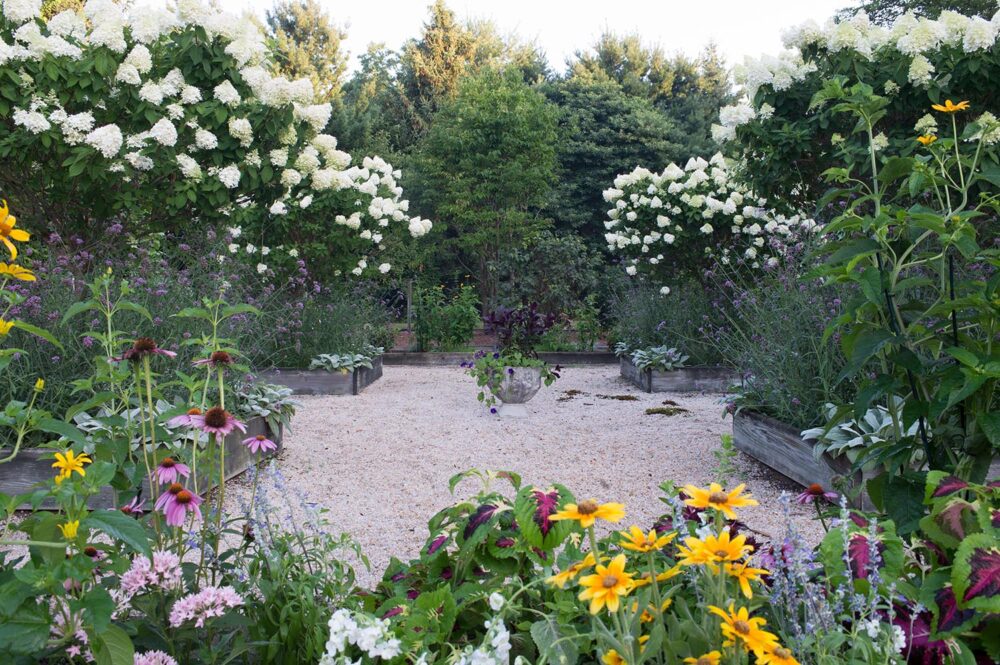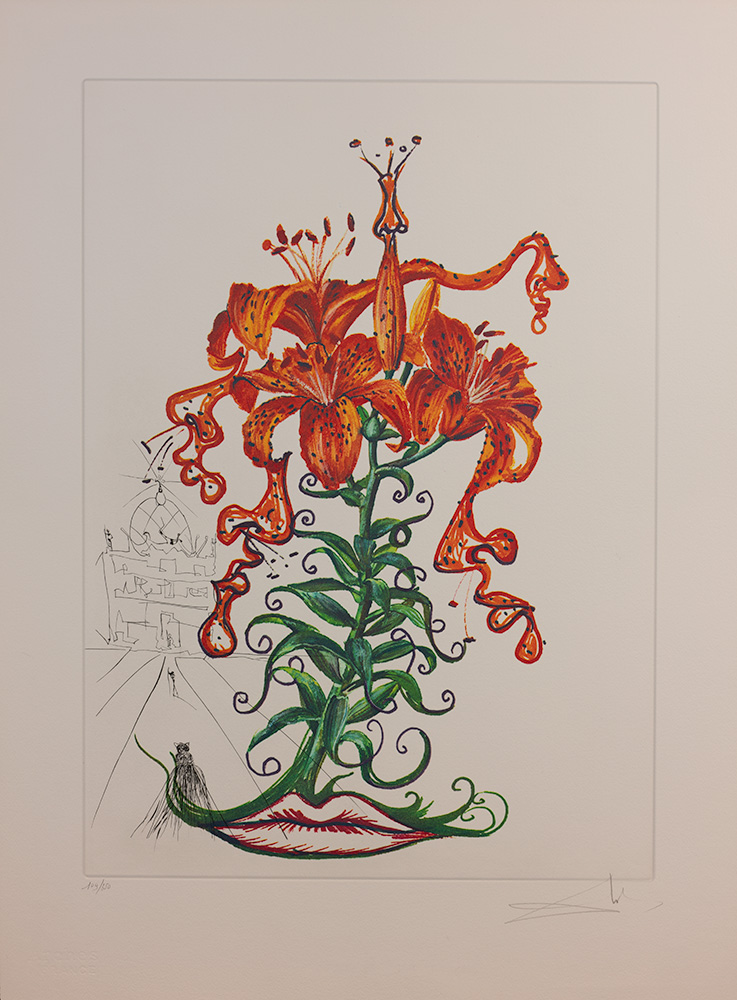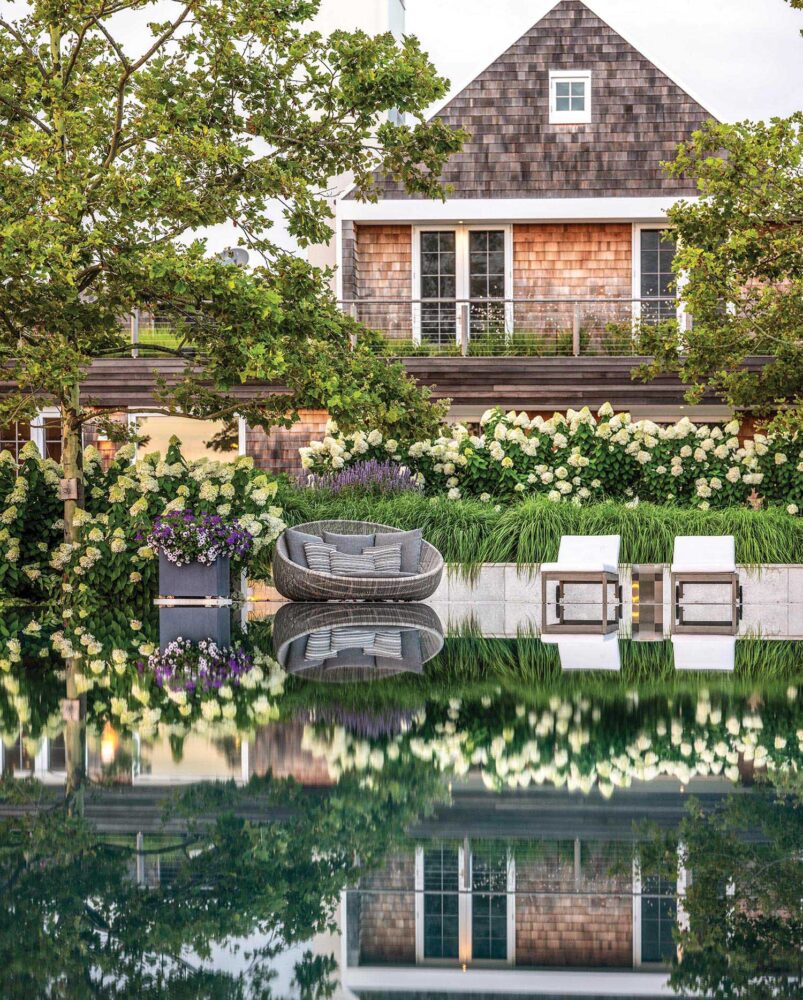Updated April 15, 2024 – There is no doubt that the majesty of beautiful can be awe-inspiring. But sometimes we can get lost in the size of a garden or it might seem lacking in personality, which is just the time to take a closer look at outdoor garden statues. Garden statuary has been used for nearly as long as gardens have been in existence. Historians believe that statues of animals strategically stood guard to ward off unwanted visitors to one of the Seven Wonders of the Ancient World—the Hanging Gardens of Babylon. Sculpted marble statues honored gods in elaborate Greek gardens. Italian monasteries produced such amazing works of art that it is widely believed that they helped launch the Renaissance period.
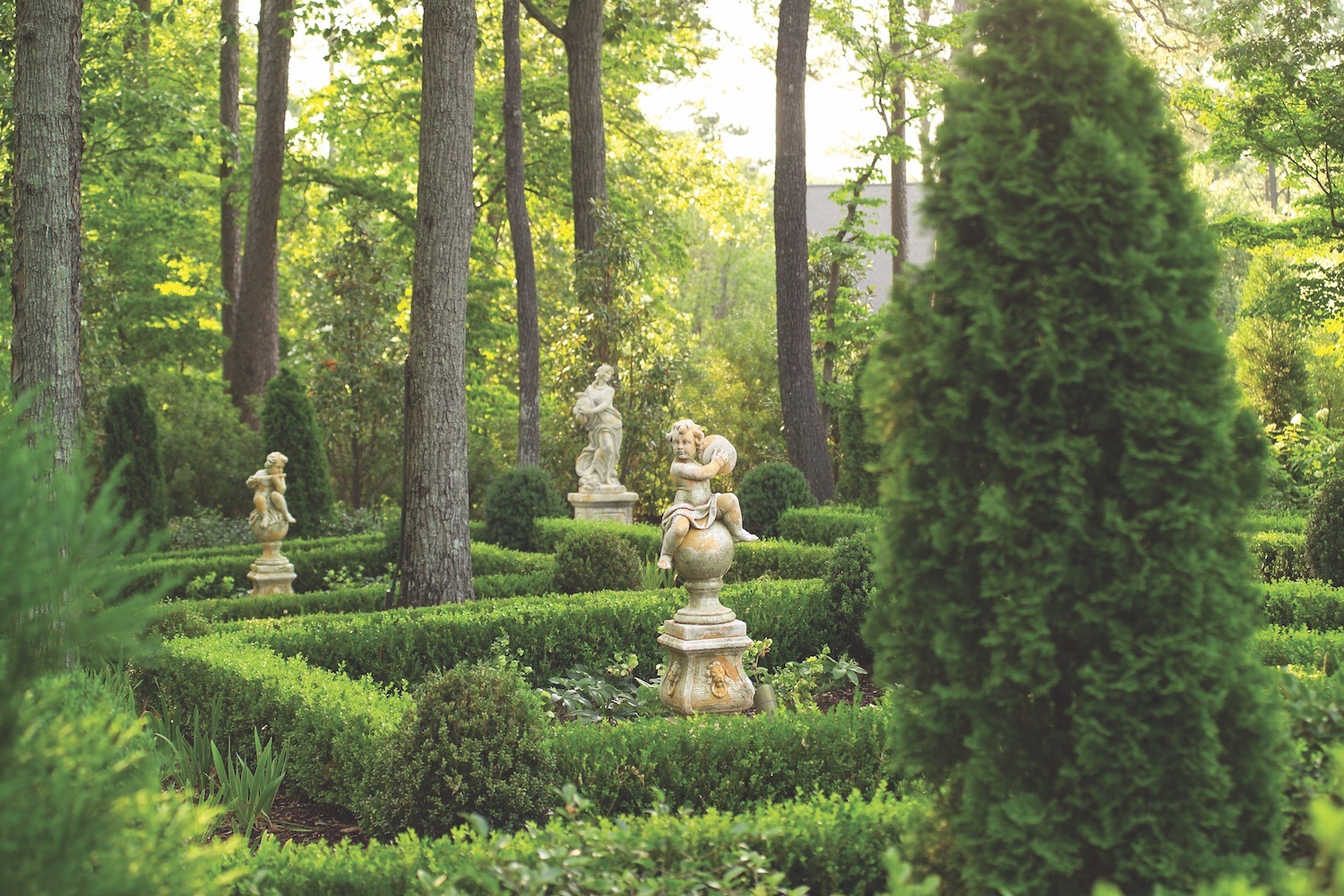
Photo by Edward Badham
Statues of musicians reside within each of four parterres. A statue of an elegant lady waits at the end of the main garden aisle.
In garden designer Troy Rhone’s garden, depictions of the Four Seasons are part of the crowd when he has an outdoor party. Their scale helps the first guests feel welcome, as if they are not the only ones present. They also serve as an unspoken boundary. “I find it is amazing how everyone remains in that garden room, not venturing out into the adjacent formal lawn,” says Troy.
Garden statues not only bring a sense of boundary and scale, they also help define the personality of a garden. Troy notes, “Whatever feeling you would like your garden to communicate, achieve it through the strategic use of garden statuary. A statue of Apollo can bring in a sense of masculinity, or a statue of St. Francis of Assisi can provide a playful reverence.”
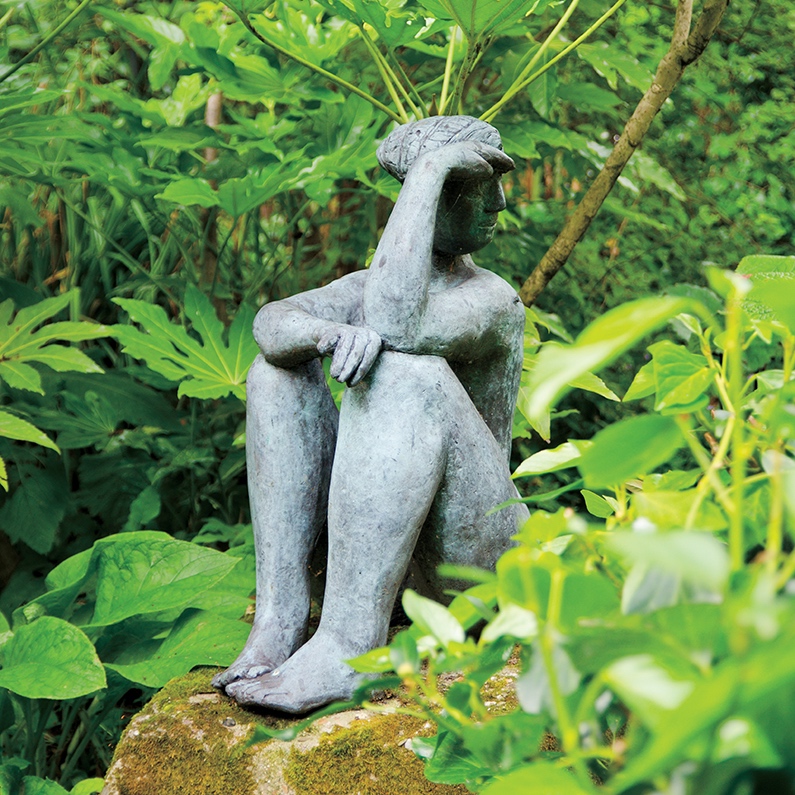
Photo by Tom Elst
This Amsterdam garden reflects the light touch and contemporary sensibilities of its owners, Hans Kos and Rutger Brandt, and abounds with tongue-in-cheek art and sculpture that peeks out from leafy corners. Here, a Saskia Pfaeltzer sculpture sits atop a rock.
Troy’s advice to anyone looking to add character to their garden: Browse local antiques stores and garden centers for the statue that will suit your personality and garden aesthetic perfectly.
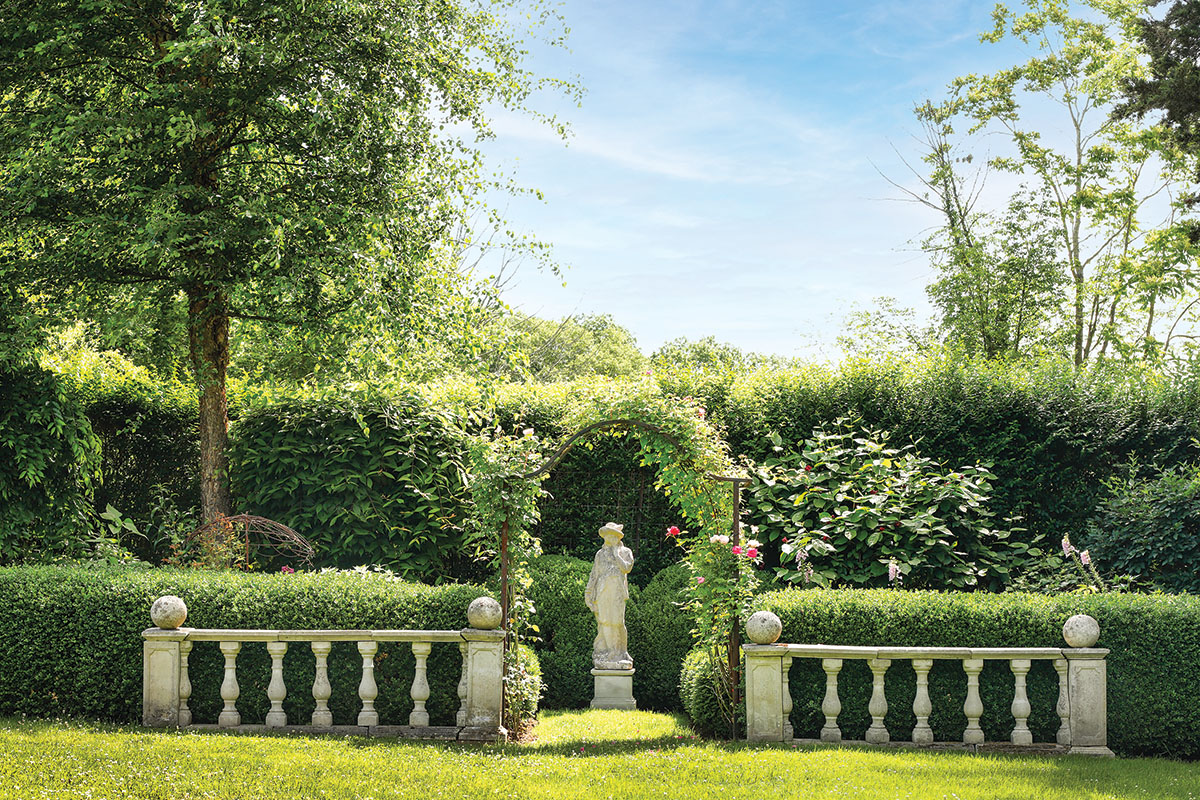
Photo ©2024 Visko Hatfield
In Barbara Israel's pump house garden, dominated by a pensive gentleman of composition stone (circa 1920), a balustrade (also 1920) offsets the hedge.
When it comes to garden statuary, Barbara Israel owner of Barbara Israel Garden Antiques, says there are no hard and fast rules. “Every landscape is different and every homeowner has their own aesthetic,” she says. “Plus, you’re dealing with nature so there are all sorts of variables.”
GARDEN STATUARY 101
Barbara shares four helpful garden ornament tips for beginners.
Add an ornamental garden bench or chair.
A bench signals to visitors that you welcome their company and are prepared for their comfort. Further, a bench (or two chairs) suggests that you might join them.
Capture a view.
Enhance your guests’ experience by placing seating in an area with a beautiful view. Want to be an even more thoughtful host? Arrange the seating beneath a shade tree.
Create niches for your ornaments.
This allows the statuary to be silhouetted in all their glory. Also consider positioning formal statuary closer to the house while placing natural elements further afield.
Include a surprise around every corner.
What better way to bring some drama and excitement to your garden?
GARDEN STATUE IDEAS
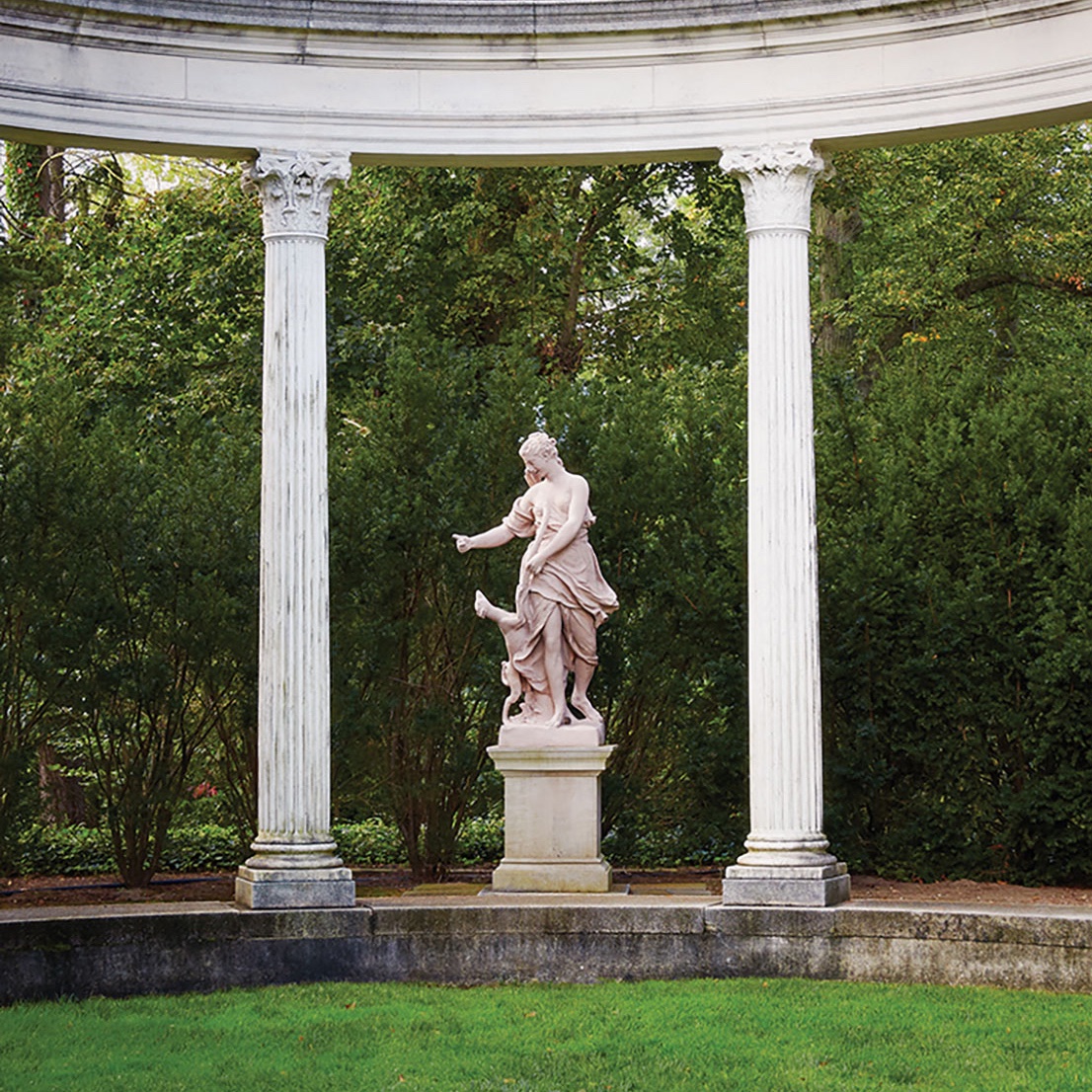
Photo by Sam Yocum
The colonnade at Old Westbury Gardens features a statue of Diana the Huntress portrayed, as the mythological goddess often is, with her hound. The terra-cotta form, created in 1732, had several cracks and lost an arm. The firm Pennoyer Newman restored and recast it.
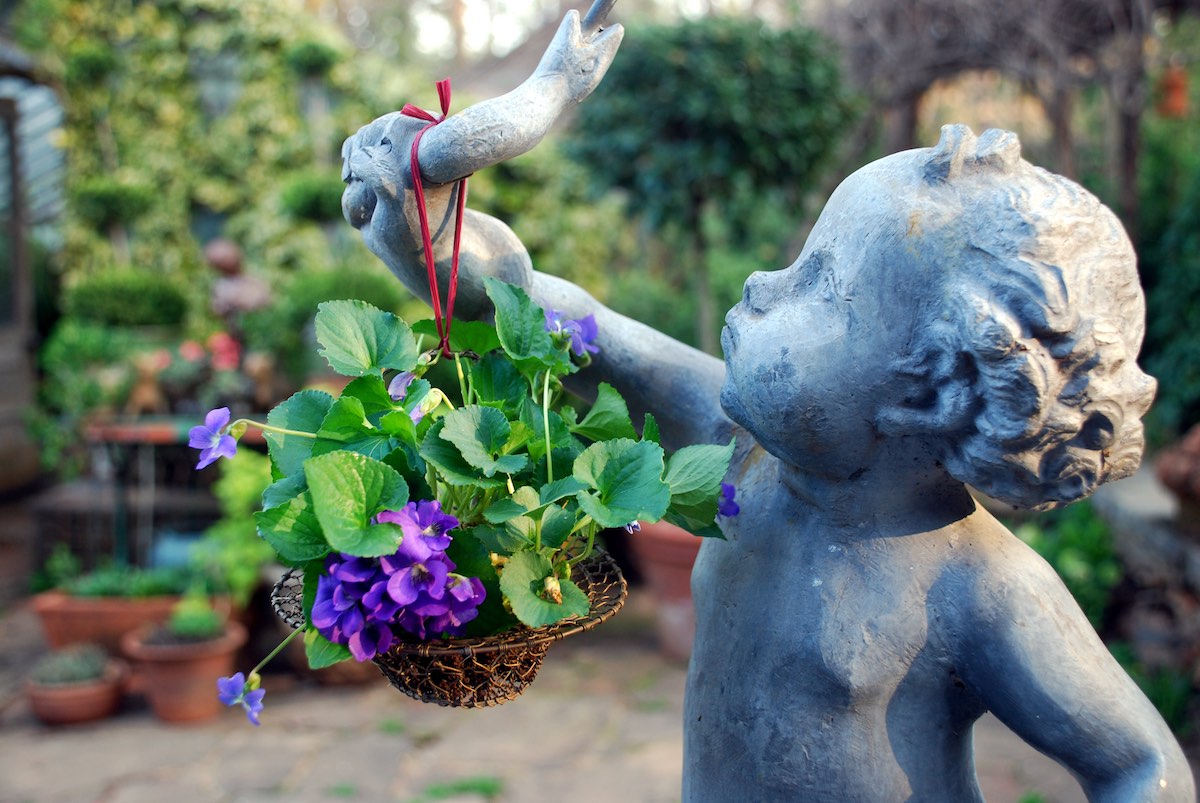
Photo by Jeffrey Lee Adler
A cherub in the late Ryan Gainey’s garden holds a container of violets. For this antique wire basket, Gainey scooped a clump of violets from the ground to achieve a look perfectly arranged by nature.
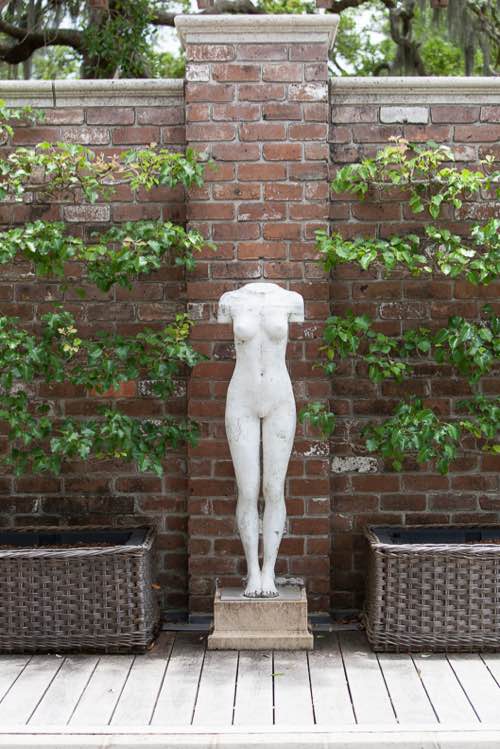
Photo by Julia Lynn
“Leitzl” sculpted by Dan Corbin, flanked by espaliered pears, stands in stark contrast to the garden wall in this Sea Island, Georgia garden.
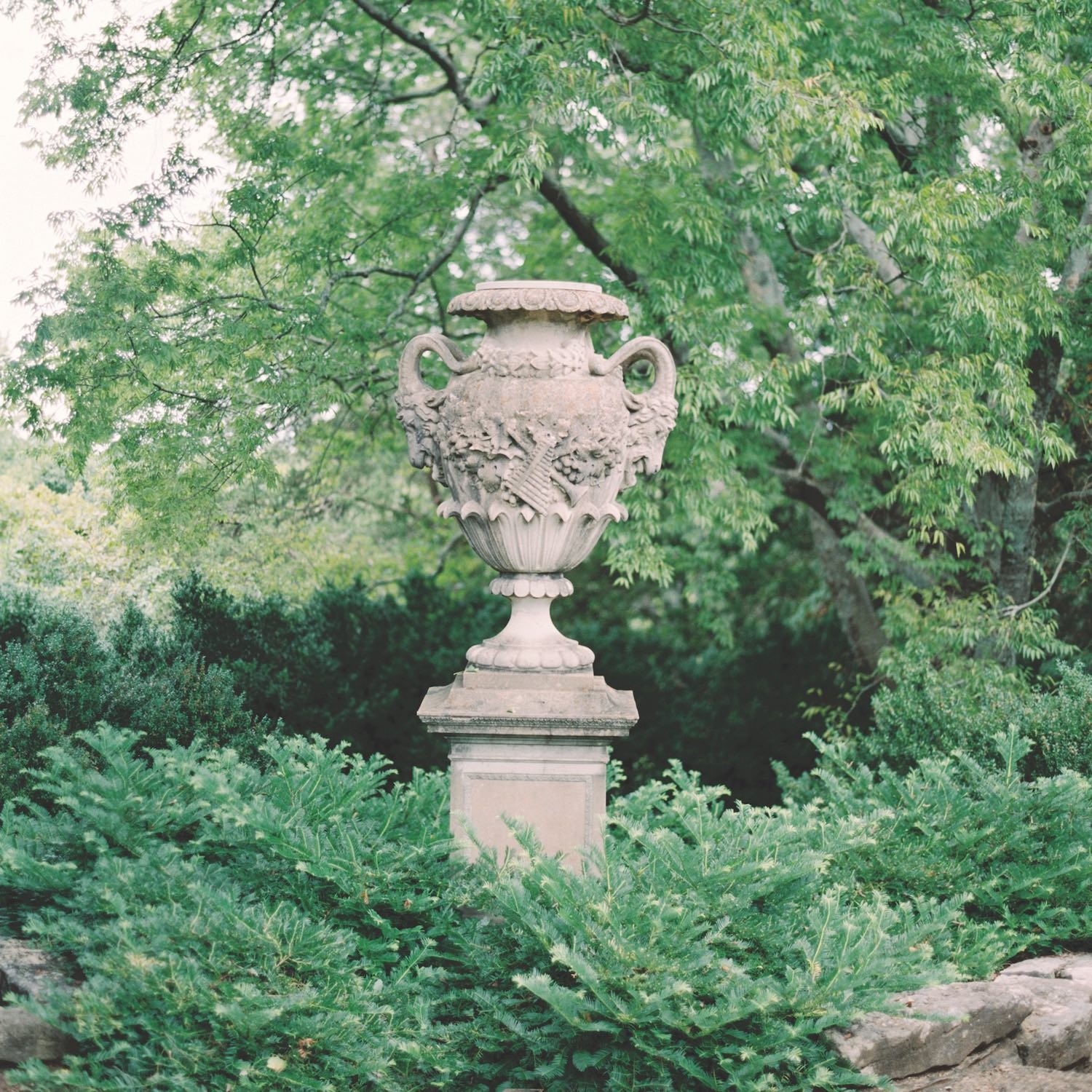
Photo by Cassidy Carson
Nashville’s Cheekwood Estate and Gardens includes sweeping 55 acres divided into 11 gardens filled with a variety of statuary like this ornate urn standing among the greenery.
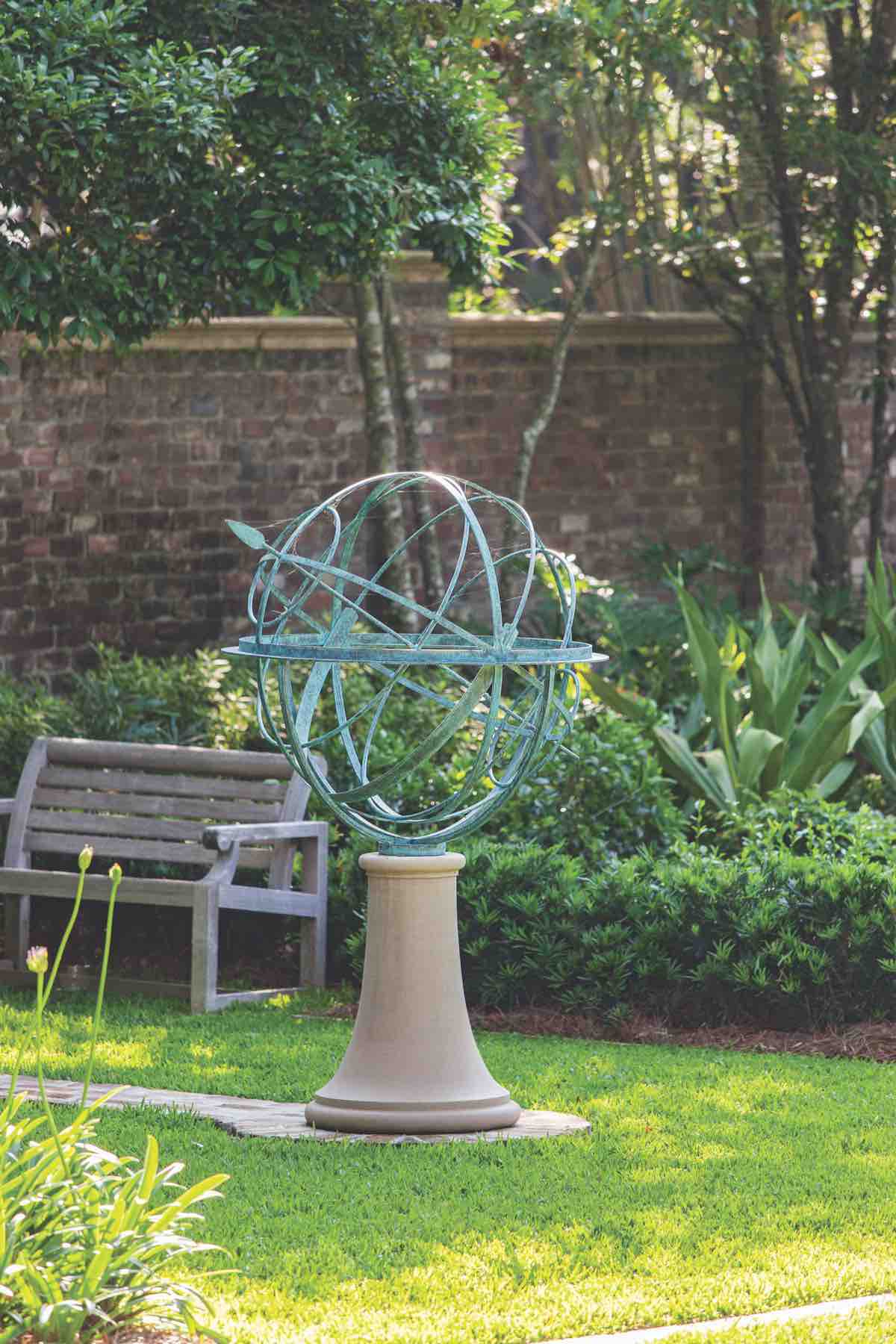
Photo by Julia Lynn
A David Harber armillary sphere emblazoned with the phrase, “There is a time and place for everything” offers direction in a Sea Island, Georgia garden.
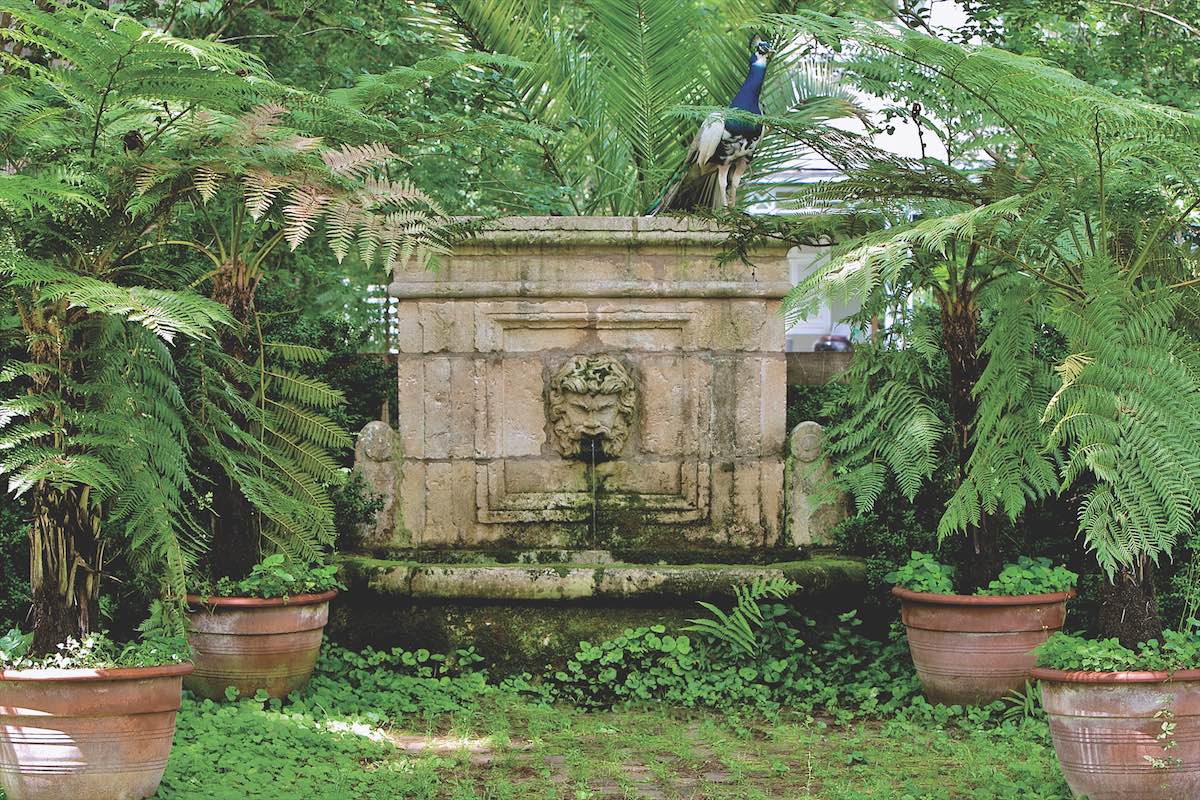
Photo by Rodney Collins, from Julia Reed's book, One Man's Folly: The Exceptional Houses of Furlow Gatewood, Courtesy of Rizzoli
An antique French fountain, surrounded by Australian tree ferns in clay pots, provides a resting spot for one of Furlow Gatewood’s several peacocks.
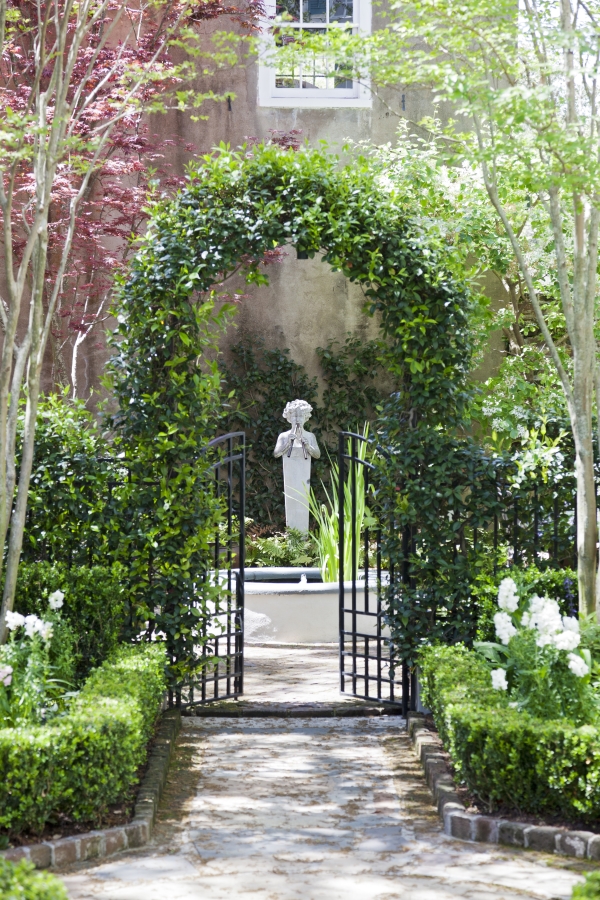
Photo by Julia Lynn
The 1739 William Elliott House’s garden is filled with hall-like paths punctuated with doorways formed by arbors and iron gates. Here, the gates open to a fountain and statue of Pan in the pleasure garden.
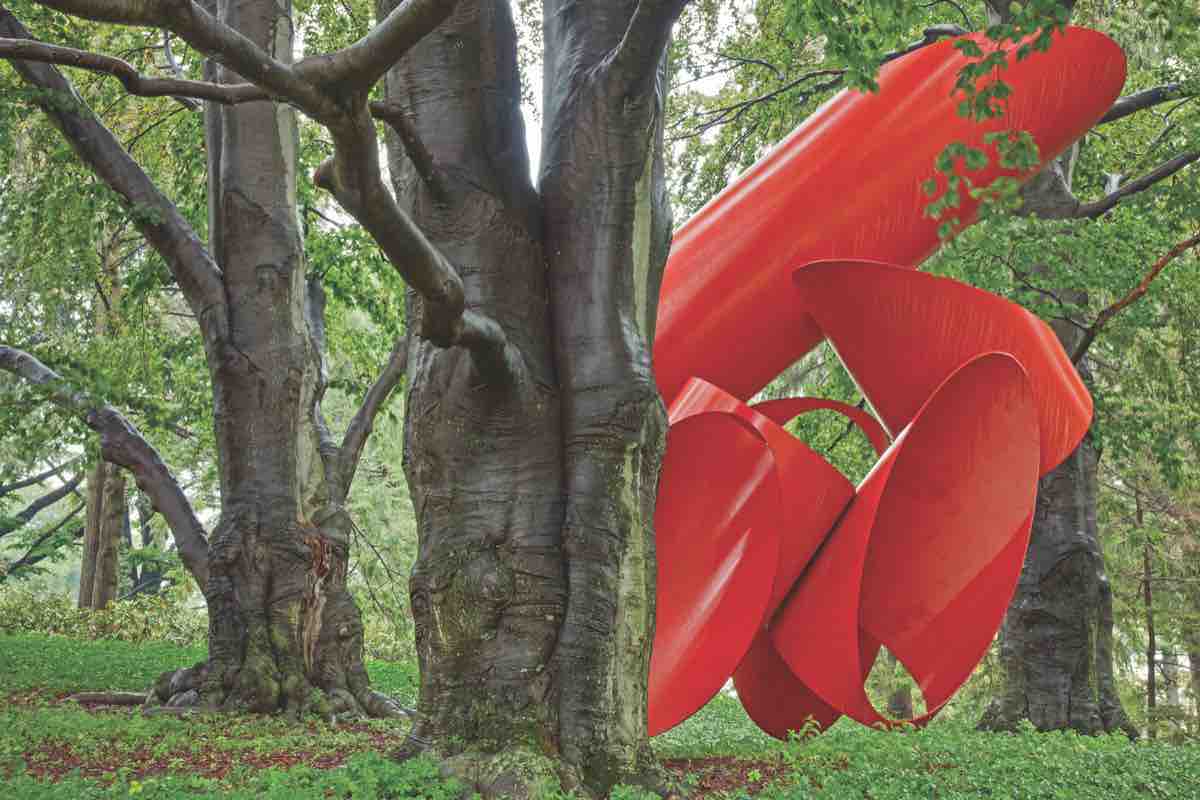
Photo by Larry Lederman from his book, The Rockefeller Gardens: An American Legacy (Monacelli Press, 2017).
Alexander Liberman’s Above II is part of the ultimate collection of garden sculpture at Kykuit, the Rockefeller family’s historic estate in Pocantico Hills, New York.
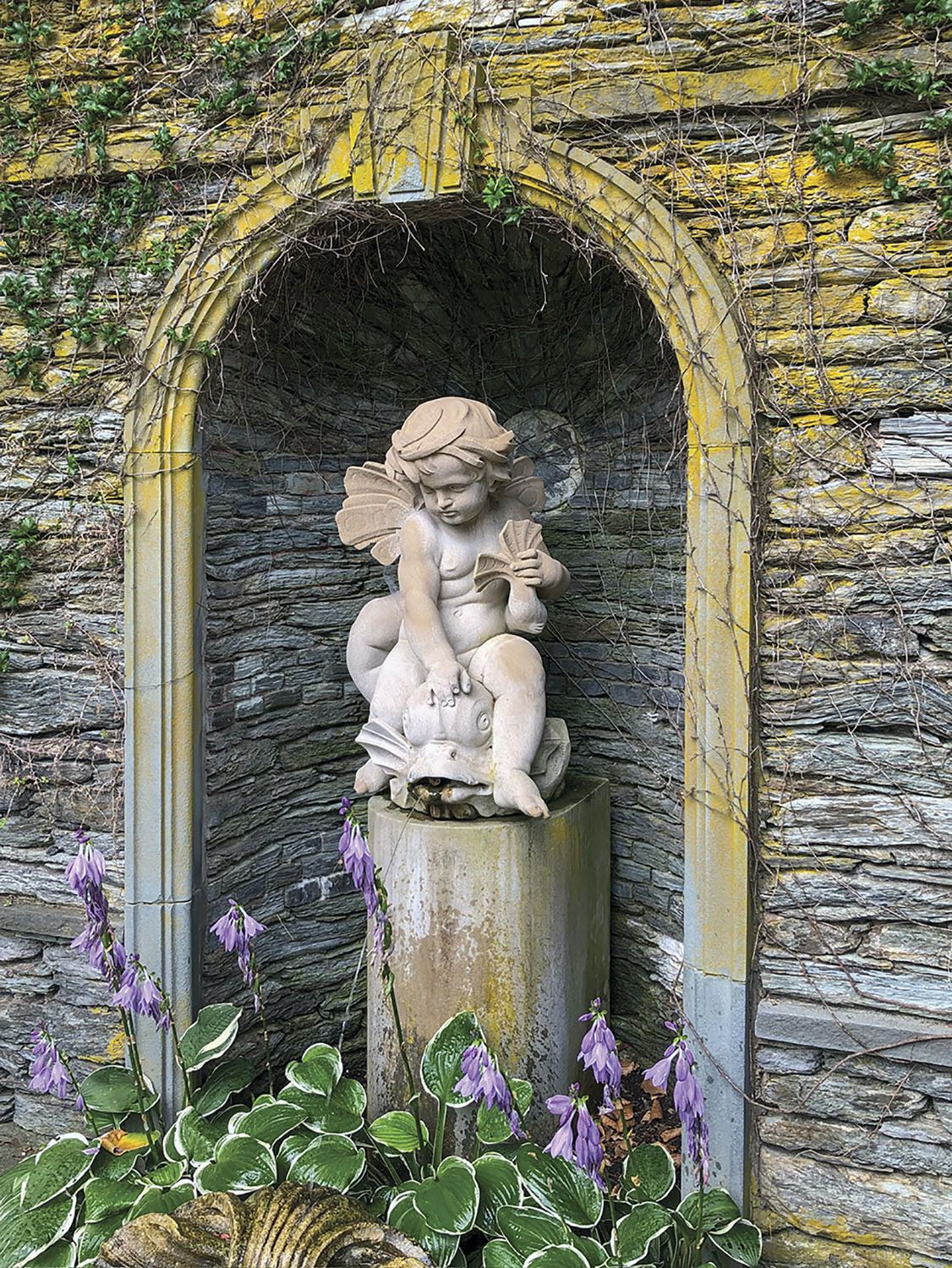
Photo by Toshi Yano.
A fountain features Cupid astride a dolphin in an elegant niche in the East Garden at Wethersfield in Dutchess County, New York.
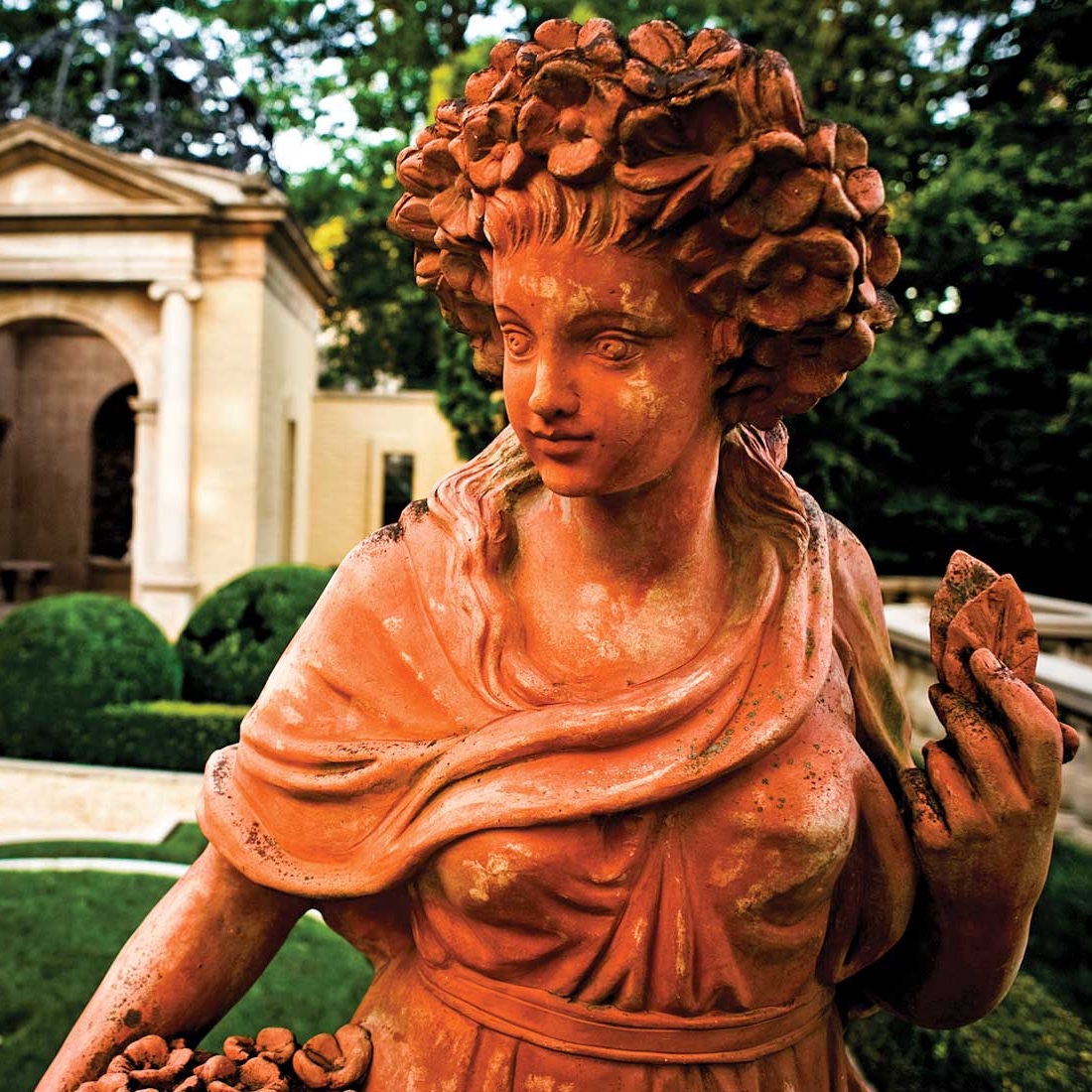
Photo by John Chiasson
A terra-cotta maiden oversees a French-style garden created by Nashville firm Page Duke Landscape Architects, and their principal partner, Ben Page.
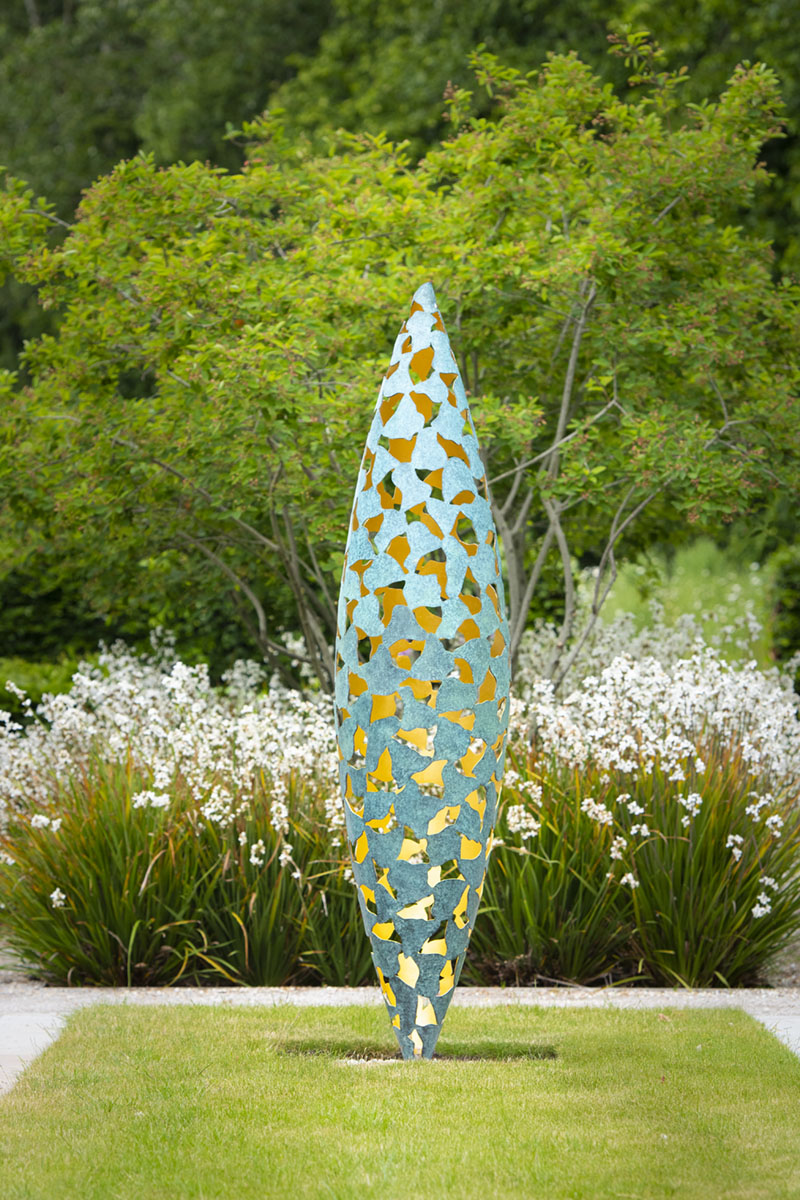
Photo courtesy of David Harber
Inspired by the pencil pines of the Mediterranean, Quill stands like a tall, silent sentinel in the landscape. The delicate lattice of bronze petals are verdigris on the exterior and gilded with 23¾-carat gold leaf on the interior. At night, an LED bulb inside creates a lantern effect.
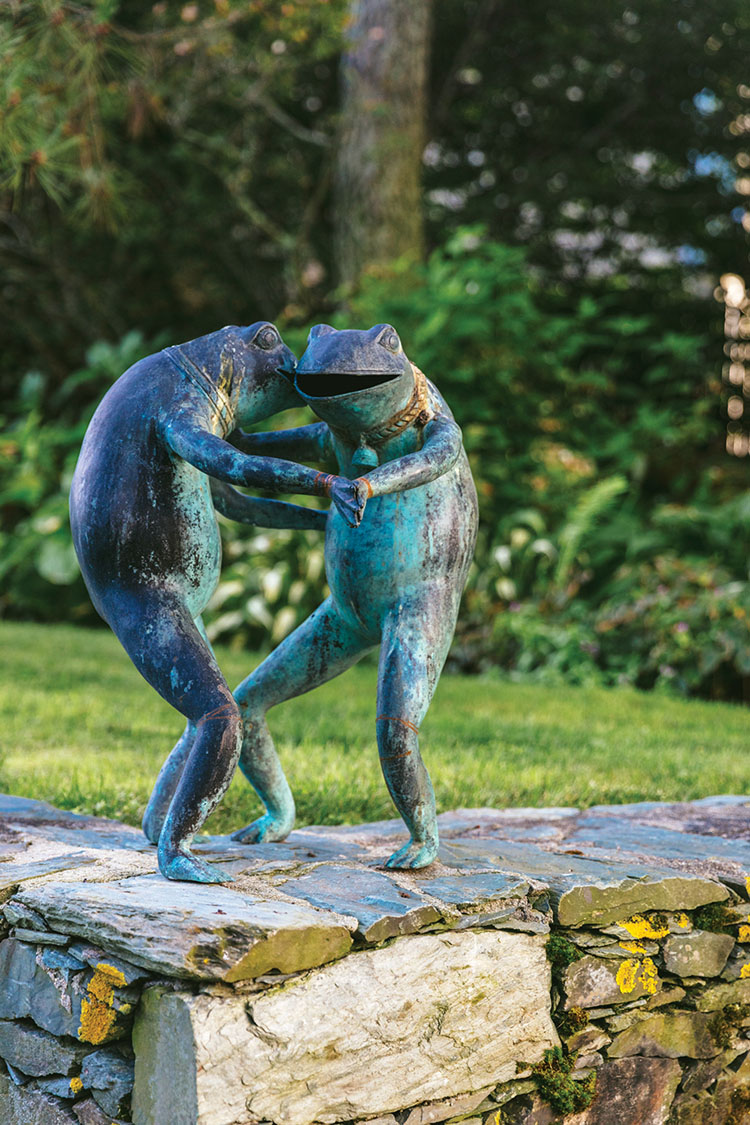
Photo by Mick Hales and Nick Mele
Oatsie Charles said this whimsical sculpture of dancing frogs was Wiggy Brown, her gardener, dancing with her on the wall.
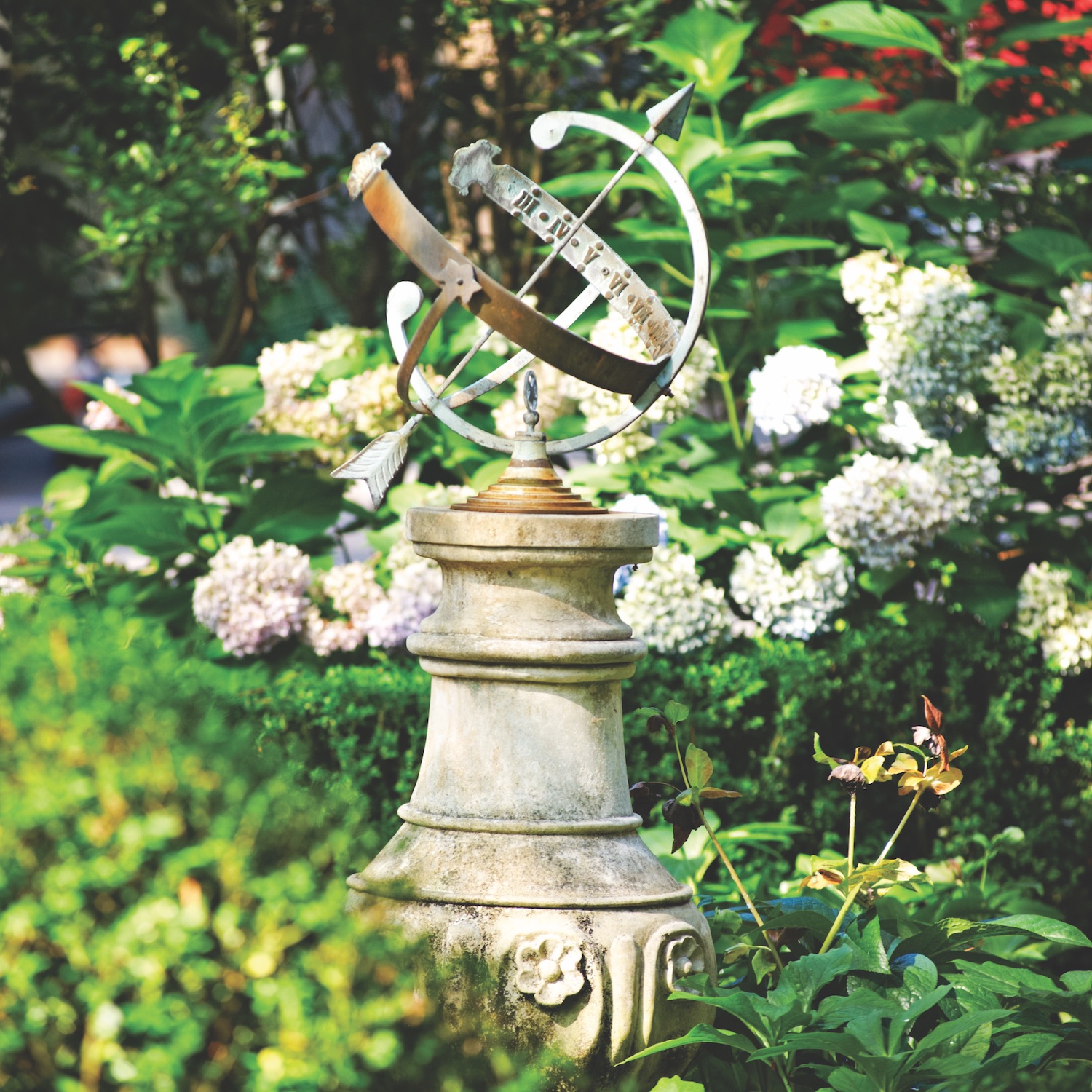
Photo by Edward Badham
Landscape designer Troy Rhone employs focal points in the form of containers, statuary, and armillary spheres in his spaces.
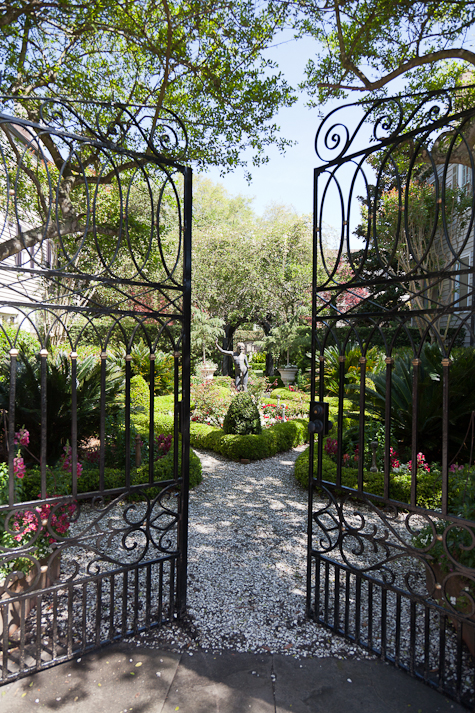
Photo by Julia Lynn
Landscape architect Hugh Dargan worked with homeowners to re-create much of the 18th-century garden by restoring the parterres and spaces, laying them out to open onto a central focal point—a sculpture from the late 1700s.
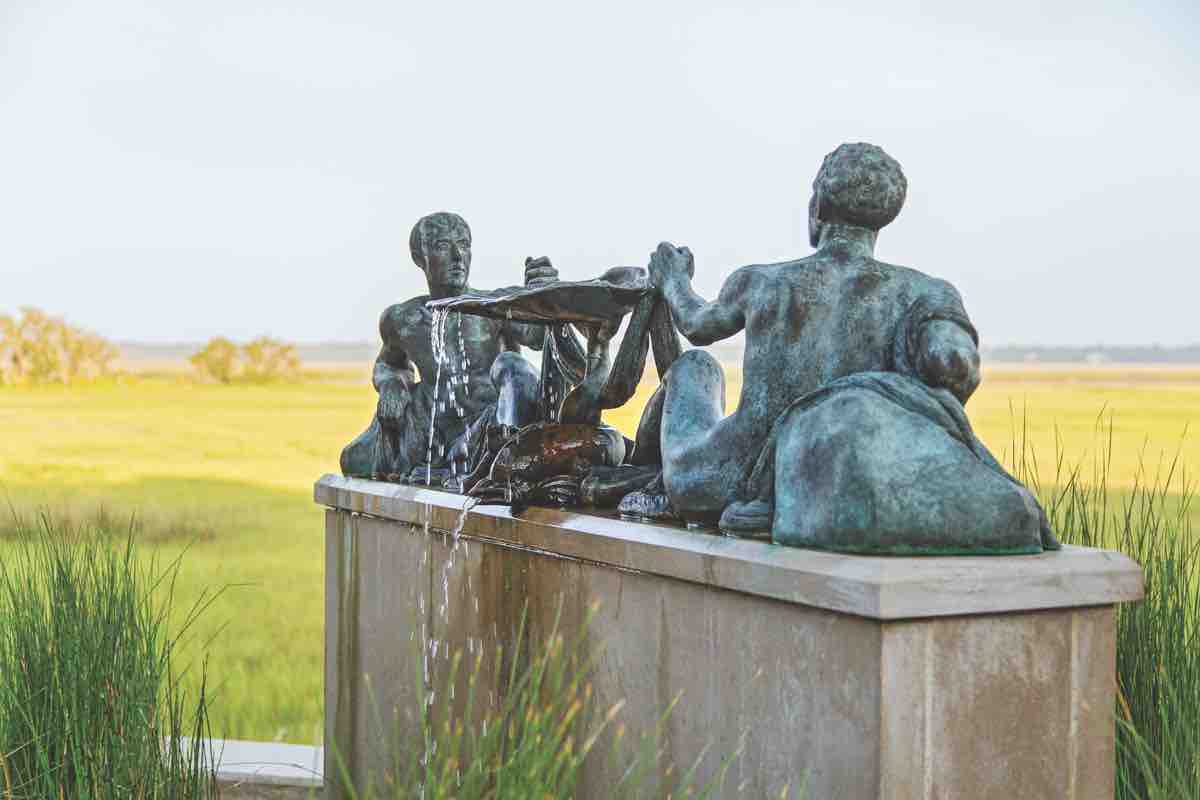
Photo by Julia Lynn
Castor and Pollux were re-cast in bronze from an original bronze rescued by Architectural Accents’ Charles Nevinson from an undisclosed City of London building.
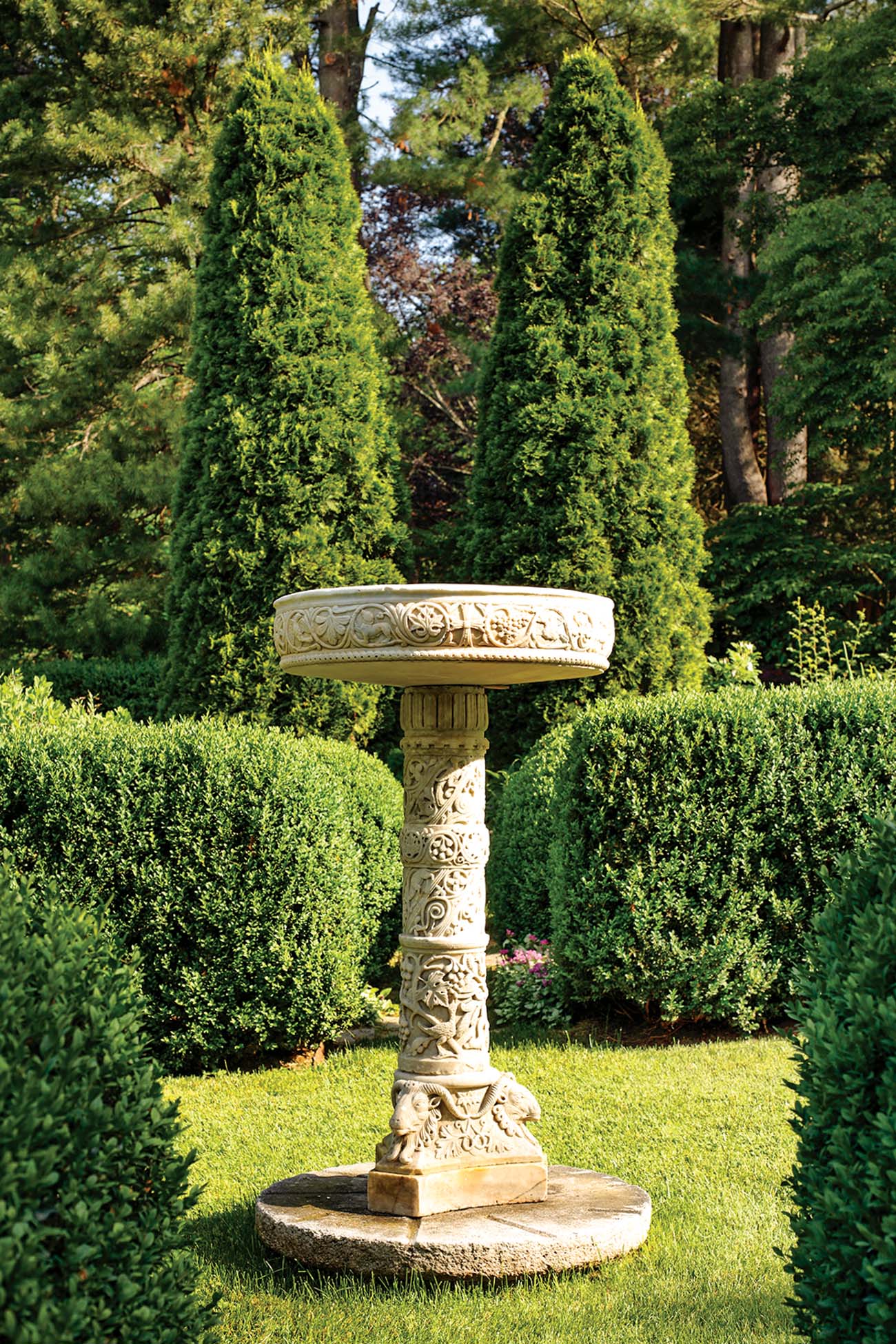
Photo © Visko Hatfield
Intricately carved with stylized birds, animals, and leaves, a Byzantine-style marble tazza is displayed in Barbara Israel’s garden.

Photo by Carolyne Roehm from At Home in the Garden (Potter Style, 2015).
This stately statue serves as a focal point in the parterre garden, one of three formal gardens at Weatherstone, Carolyne Roehm’s Connecticut home.
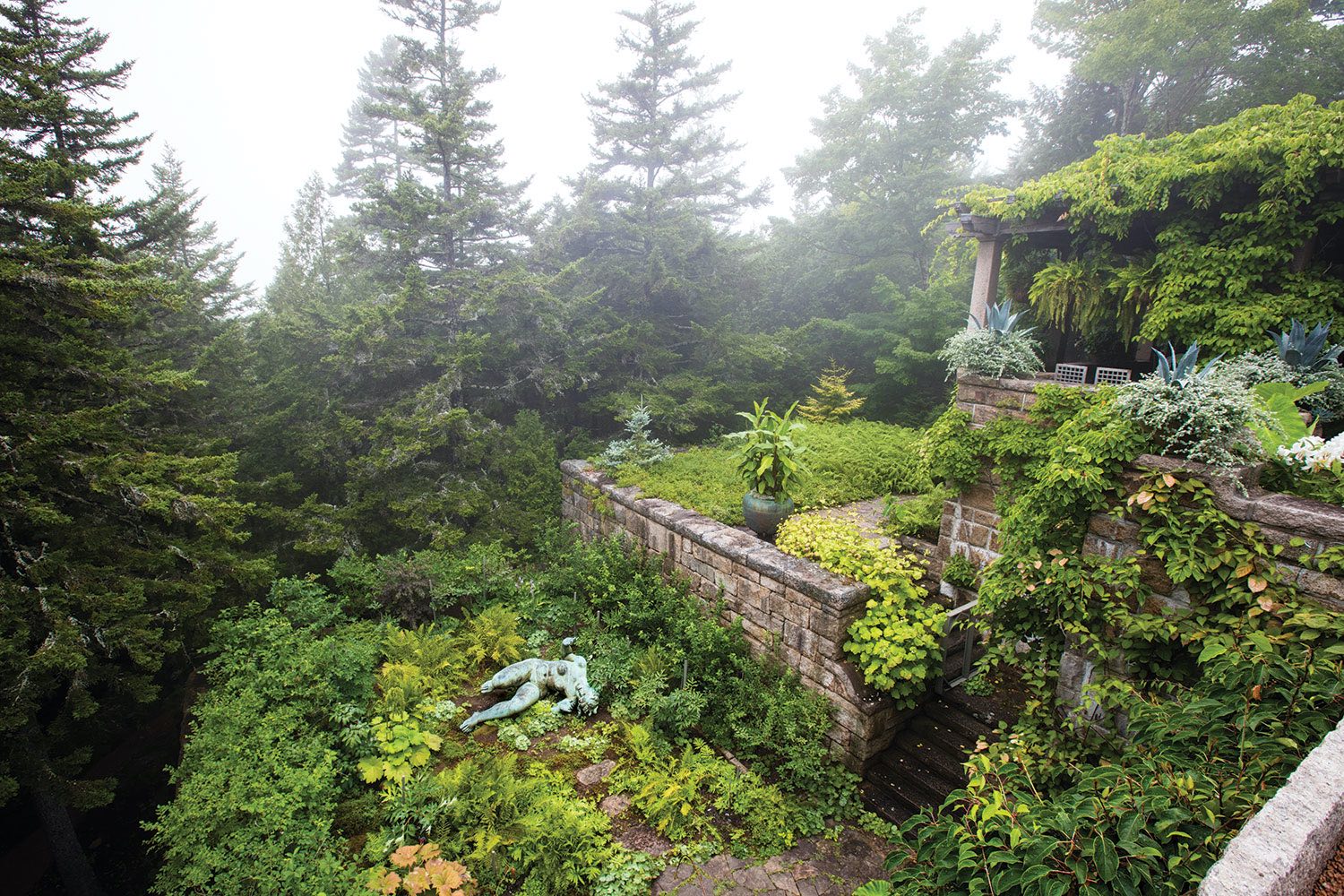
Photo by Claire Takacs
Aristide Maillol’s statue La Rivière looks up to a Seal Harbor sky from a rich assemblage of ground covers on a landing below the main terrace at Skylands, Martha Stewart’s summer getaway on the coast of Maine.
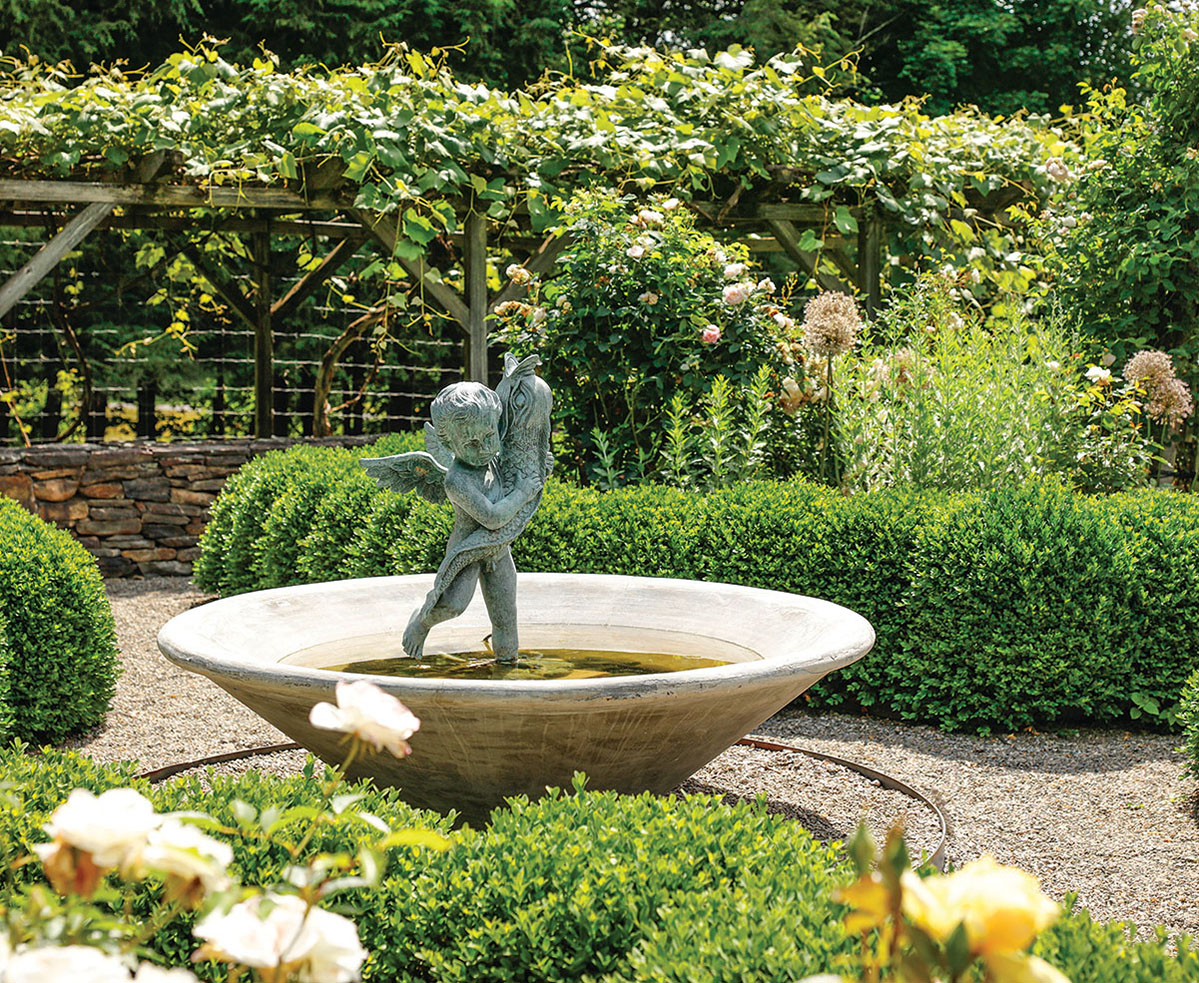
Photo © Visko Hatfield
The winged cherub is a popular motif for garden ornaments. Here, the intricate bronze fountain figure (Continental, circa 1990) holds a fish while standing on a rockwork base in a circular stone basin. He serves as the focal point in a boxwood-edged parterre garden backed by a Concord grape arbor.
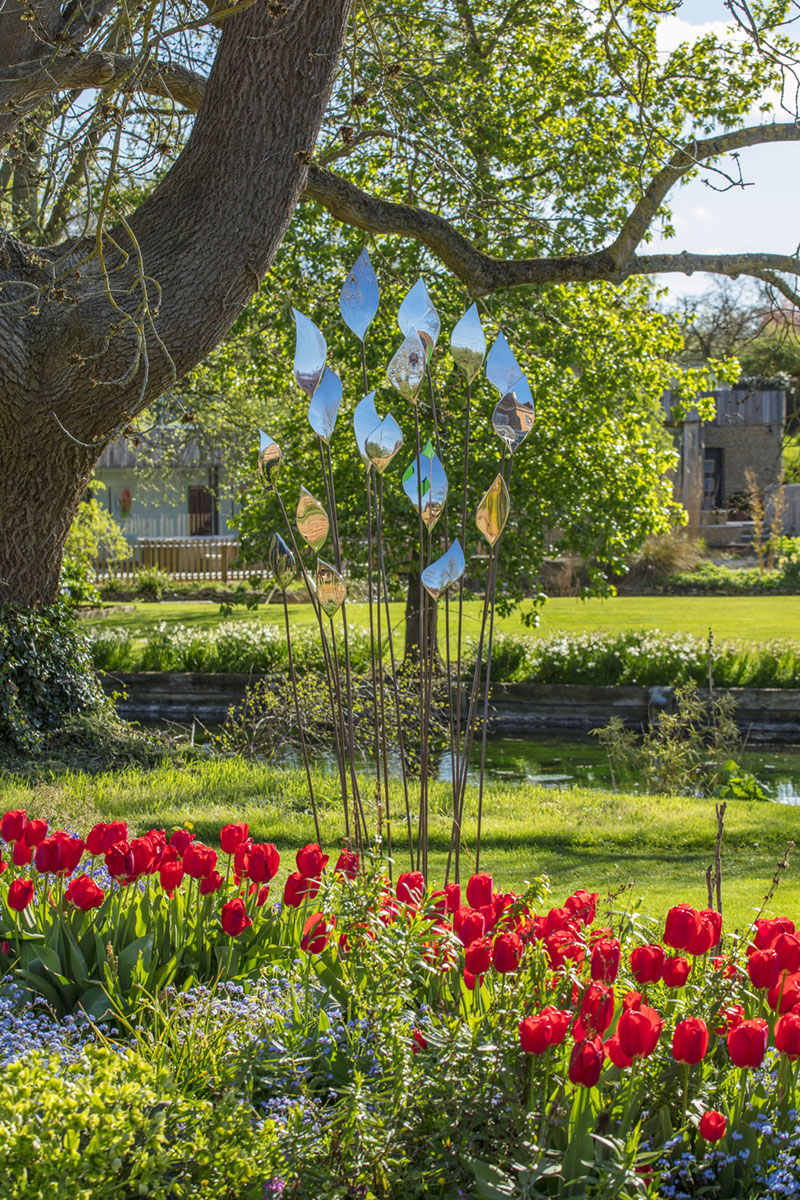
Photo by Clive Nichols
Inspired by a rippling field of ripening wheat, David Harber’s Quiver stands in a bed of tulips. Its mirror-polished leaves, set on elegant stems of patinated oxidized steel, form a cluster of reflected images that shift gently with every breath of wind.
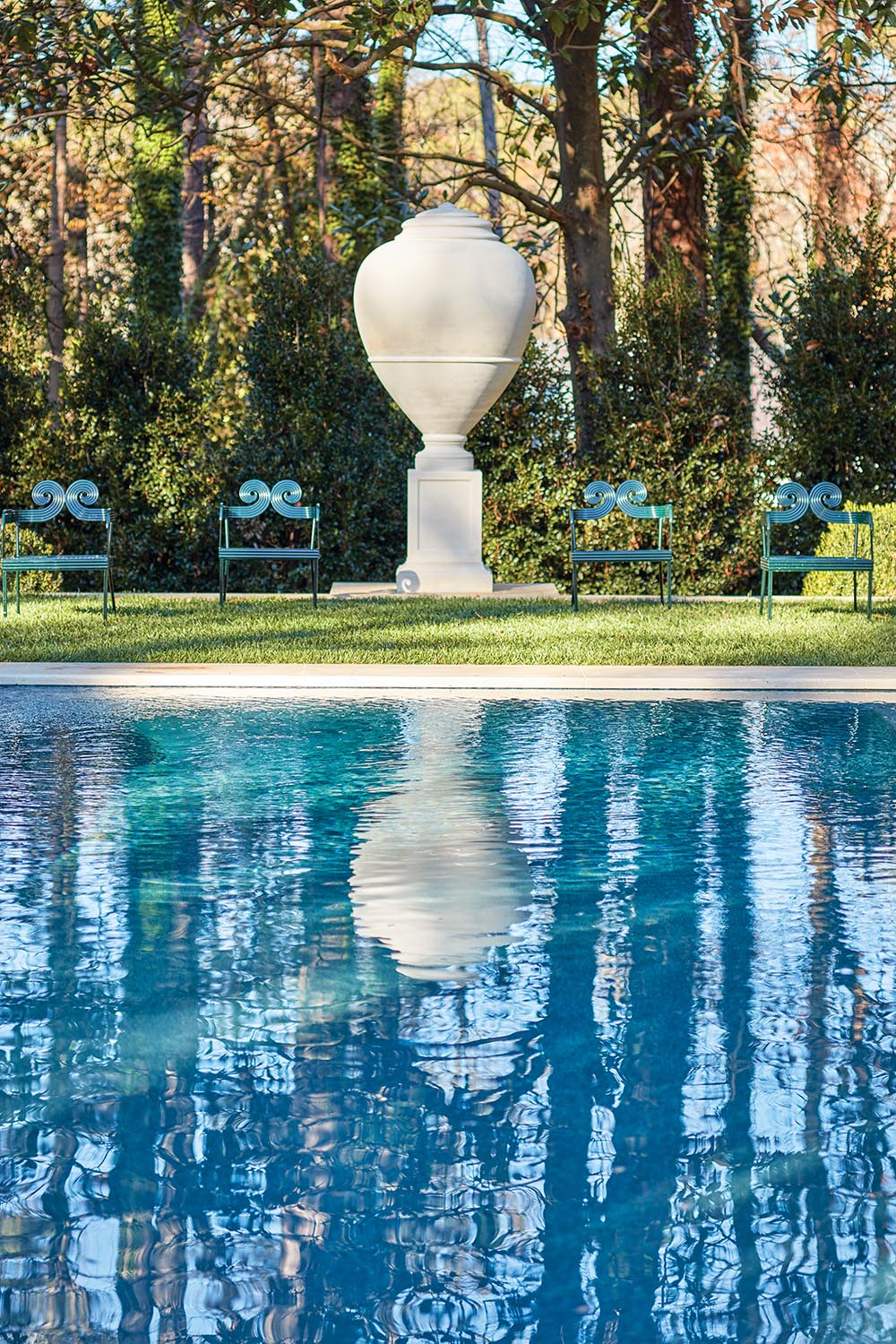
Photo by Brian Bieder
As a focal point for the FLOWER Magazine Atlanta Showhouse pool area, John Howard used this oversized Italian olive jar and top dry cast by Longshadow. The design references jars seen in many Renaissance gardens.
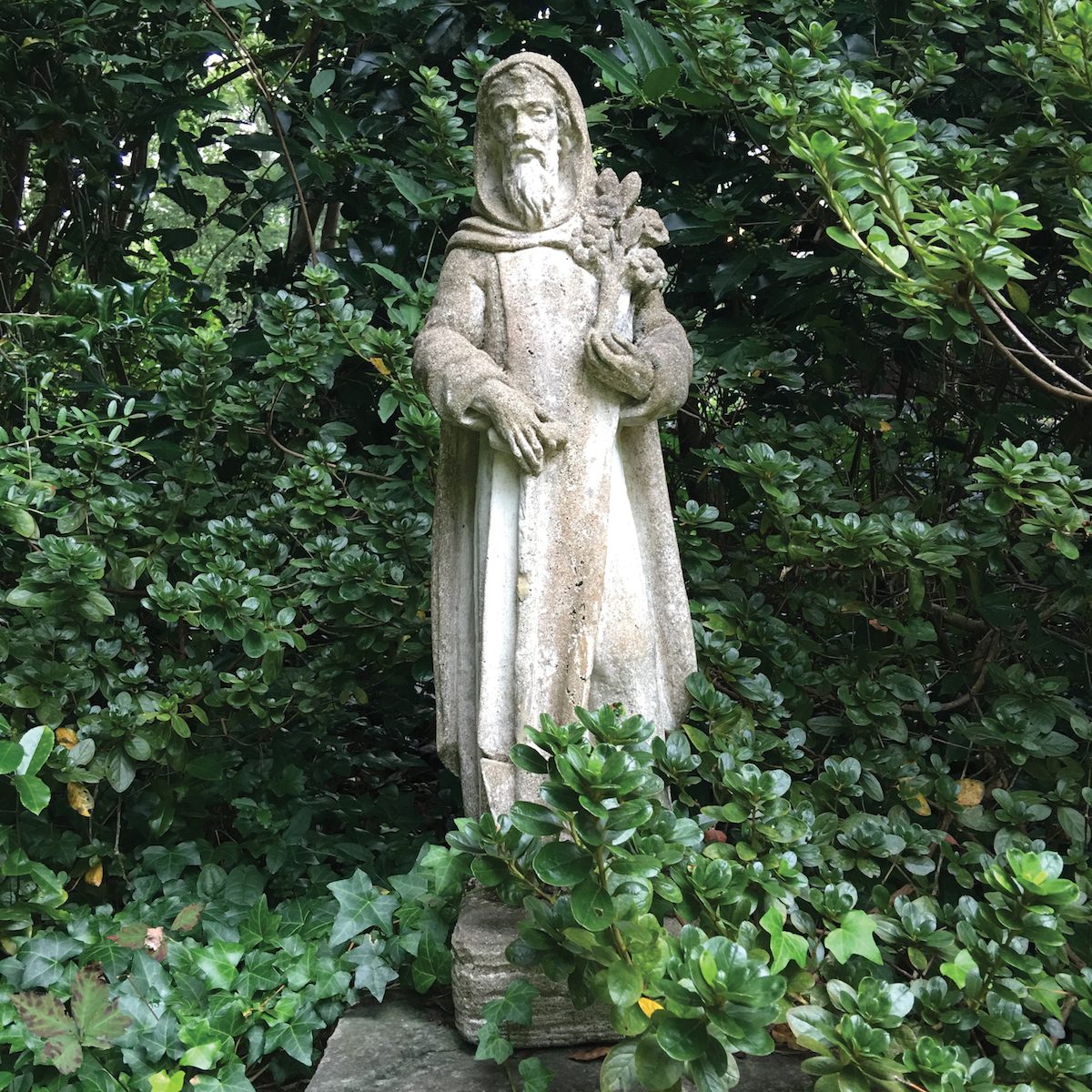
Photo courtesy of Louise Agee Wrinkle
A statue of St. Fiacre, the patron saint of gardeners, stands in Louise Wrinkle’s Mountain Brook, Alabama garden.
By Troy Rhone and FLOWER Editors

